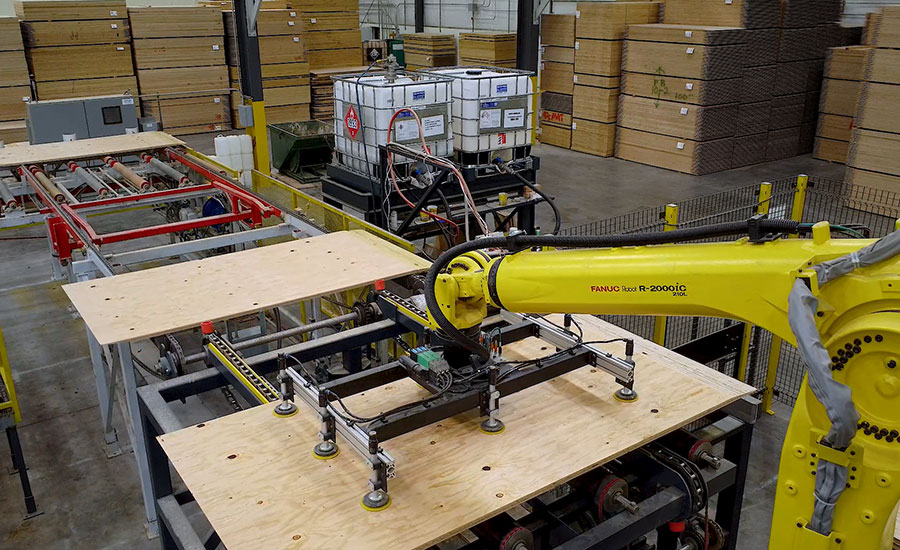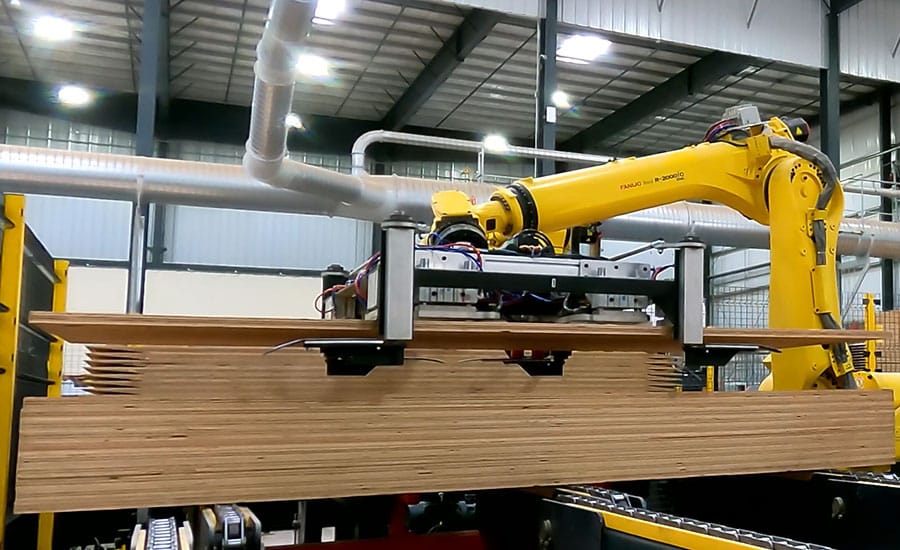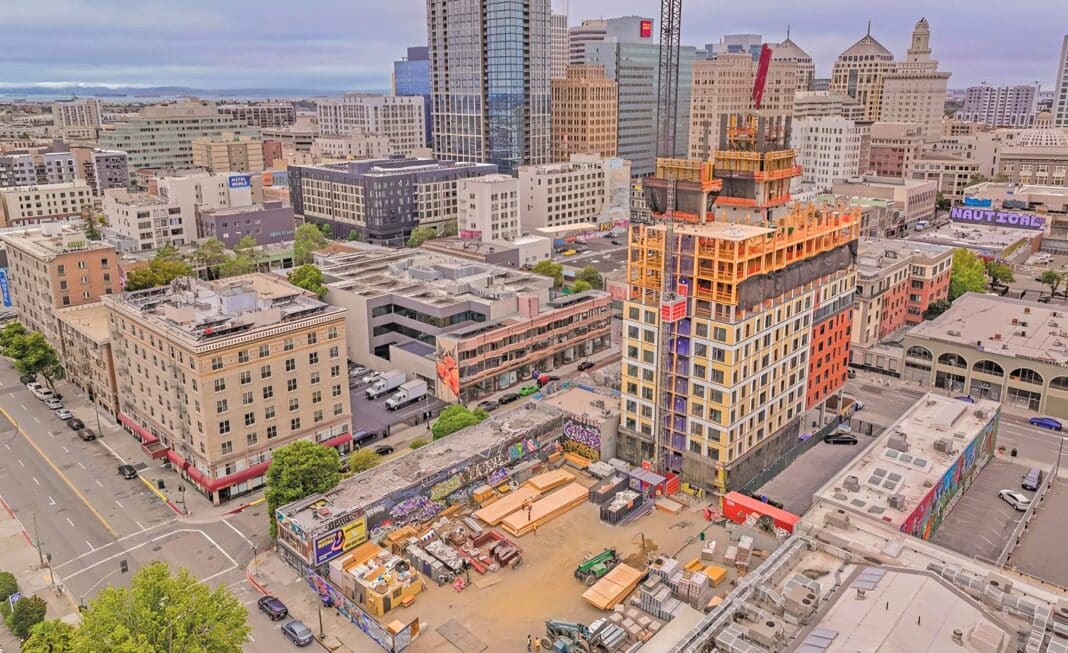One of North America’s leading timber manufacturers, with a patent for a new mass timber product used in post-and-plate timber high-rises, is now using robots to manufacture timber panels for walls, ceilings, and floors, a move that is key to “future-proof” the business for hundred years or more.
The product in question is Mass Ply Panels, a new type of mass timber manufactured by Freres Engineered Wood. Freres claims it has superior properties to cross-laminated timber, glulam, and solid timber.
Last year, Wood Central covered the use of the product in oWow’s 1510 Webster development, billed as the tallest beamless mass plywood structure in the world.
At the time, Wood Central contributor Andrew Dunn stated that “the product’s unique construction and performance advantages make it a game-changer in the world of sustainable construction materials.”
Before adding, “A fascinating aspect of MPP’s manufacturing process is the cutting of the scarf joint. Three robots perform a synchronised ballet to cut scarfs at each panel end, showcasing the marriage of technology and timber innovation.”

This process is thanks to a custom-built robotic cell, which includes two Japanese automated six-axis robots made by FANUC. Both robots lift panels for cutting using a specially designed end-of-arm tool (or EOAT), which boosts production efficiency and improves quality thanks to superior joints.
“The end-of-arm tool will vacuum pick the plywood panel that’s going to be scarfed,” according to PRE-TEC’s Mark Matteson, the company that supplied Fresers with a new production line that helps to make larger panels out of smaller pieces of wood.
According to Mr Mattheson, the robotics present the panels to the cutting head, with the EOAT squaring and clamping the panels with an onboard thickness measurement system, ensuring they are within the target thickness range. Should the panel fail, the robot then places it on a reject conveyor belt, where it will be inspected by plant staff. “And if it meets thickness, the panel end is inserted between the hold-down mechanism and an anvil.”
Once the panel is in the desired position, the clamping mechanism activates, holding the panel down against a machined surface to reduce vibration and the effects of cupping in the wood on joint quality. When the cutting cycle is complete, the robot flips the panel to present the other end.
“The benefit there is that we’re having the same cutting head cut on both sides of the panel, so we know we have a balanced scarf joint on both ends of our panel,” according to a Freres spokesperson who added, “we could not do that without having a robotic application.”

Meanwhile, as the first panel is cut, the second robot goes through the same picking, squaring and thickness checks before staging a second panel below the one cut above.
This system has significantly improved the quality of the panels’ joints, benefiting their strength and performance. Moreover, the automated cutting system has doubled production capacity because two robots now continually feed the same cutting head.
“We’re using two robots in a very tight space to work together, without collisions, to fully utilise a cutting head system,” Mr Mattheson said. “With the FANUC robots, you can control the scarf-cutting process to ensure that we are within tolerances.”
Not only is the robotic system increasing quality and throughput, but it’s also freeing up hard-to-find employees: “It’s a lot less manual labour for our employees,” Freres said. “It’s an easier process for them to manage.”
“We’re looking at technology and robotics as a way to support the innovation that our industry and our company, in particular, need to survive for another hundred years,” according to Frerers, adding to the growing number of timber companies now embracing robotics and AI to fuel the next generation of modular and prefab construction.
Last month, Wood Central reported that prefab construction was Paris’s “secret weapon” behind its €2B Olympic Village, delivered on time and to budget. Meanwhile, Canadian developers are now using ‘intelligent robots’ and design for manufacturing and assembly (DFMA) to drive Canada’s “Quick Builds”—Canada’s latest policy to tackle its chronic housing shortage.
Mass Ply Panels is a new veneer-based engineered wood product that is lighter than steel and stronger than cross-laminated timber. The product is already being used in Californian mass timber projects, with oWOW President Andrew Ball asserting that using MPP instead of concrete and steel saved the company 15% in overall costs and reduced construction time by 25%.
- For more information about Mass Ply and its use in North American projects, visit Wood Central’s special feature.






